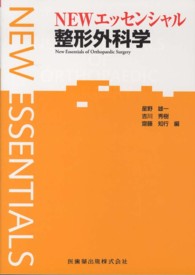Full Description
The intent of this book is to describe how a professor can provide a learning en vironment that assists students to come to grips with the nature of science and engineering, to understand science and engineering concepts, and to solve problems in science and engineering courses. As such, this book is intended to be useful for any science or engineering professor, who wants to change their course to include more effective teaching methods, to instructors at post-secondary institutions, who are beginning their careers, and as a handbook for TA's. Since the book is based upon articles that I have had published in Science Educational Research and which are grounded in educational research that I have performed (both quantitative and qualitative) over many years, it will also be of interest to anyone engaged in research into teaching science and engineering at the post-secondary level. I have also tried to include enough background so that the book could be used as a te- book for a course in educational practice in science and engineering. The book has two main axes of development. Firstly, how do we get students to change their epistemology so that their outlook on the course material is not that it consists of a tool kit of assorted practices, classified according to problem type, but rather that the subject comprises a connected structure of concepts. Secondly, he- ing students to have a deeper understanding of science and engineering.
Contents
How Students Learn Science.- Intellectual Development and Psychological Types.- Students Alternative Scientific Conceptions.- Writing to Learn: Reflective Writing.- Changing Student's Epistemologies.- Getting Students to Examine Their Epistemology.- Critical Thinking.- Educational Models Based upon Philosophy of Science.- Changing Student's Epistemologies.- Final Thoughts.- Courses for Non-science Students.- Computer Assisted Instruction.- Summing Up.








